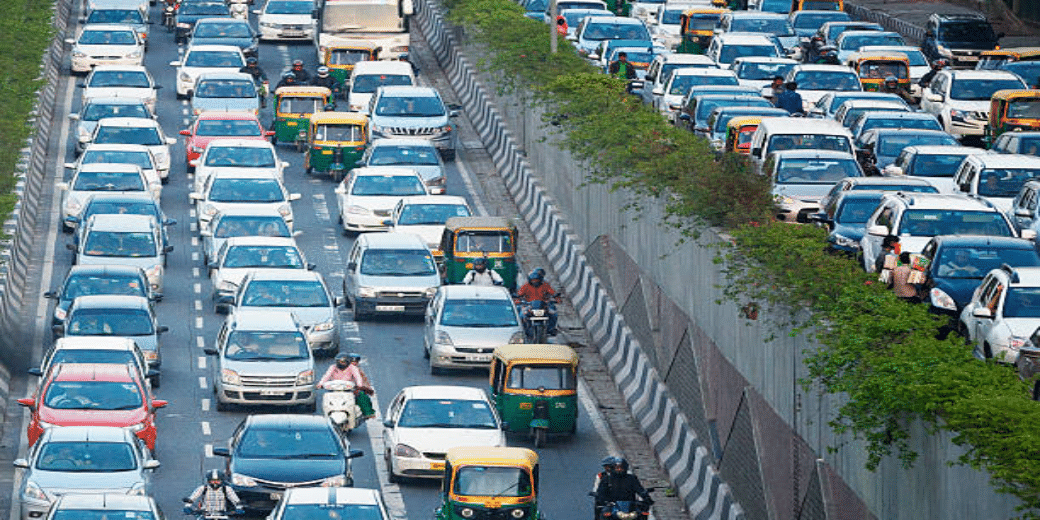Rising rural sales: Country roads taking automakers home
Over the past few years, the rate of growth in sales of passenger vehicles in rural areas have consistently been higher than that in urban India

Rural consumers are racing ahead compared to their urban counterparts buying more and more passenger vehicles, a trend that has prompted original equipment makers (OEMs) to beef up their networks in smaller towns, the Business Standard has reported.
Confirming the rising significance of the rural consumer Shashank Srivastava, senior executive officer, marketing & sales, Maruti Suzuki India (MSIL) told the newspaper, “Even during the pandemic years, when the urban growth was negative, rural PV sales were positive. Rural sales are now 32-33% of overall PV sales at an industry level, and thus they are a significant volume that no one can ignore.”
Sales of India’s largest passenger vehicles manufacturer corroborate this trend. The share of rural sales in MSIL’s nationwide pie, which was about 38% in FY19 now stands at 45%.
Significantly, over the past few years, the rate of growth in sales of passenger vehicles in rural areas have consistently been higher than that in urban India. In the past six years, the rates of growth in this crucial sector of the Indian economy have been recorded at 4.2% for rural and 1.6% for urban in FY19, (-)13.1% (rural) and (-)17.4% (urban) in FY20, 6.6% (rural) and (-)3.9% (urban) in FY21, 1.5% (rural) and (-)9% (urban) in FY22, 20% (rural) and 16% (urban) in FY23 and 11.7% (rural) and 8.0% (urban) in FY24.
Tata Motors has recorded a dramatic five-times rise in sales in the countryside between FY20 and FY24. The company’s MD Shailesh Chandra told the newspaper that 40% of its total sales come from the rural markets. “To get closer to our customers, we have expanded in both sales and service workshop setups. Over 800 outlets are located in nearby towns, catering specifically to our rural customers. We have also deployed 135 Anubhav vans (mobile showrooms),” he said. Chandra emphasised that Tata Motors was working intensively with its dealers on expanding sales and service networks, adding manpower and providing more test drives.
The CEO of the automotive business of Mahindra & Mahindra said improved condition of roads in the rural areas was helping the company expand the network to ensure accessibility for customers and support future growth plans. M&M’s SUVs are witnessing demand in the rural segment in tandem with that in the urban areas.
Maruti’s Srivastava said rural areas demand a different marketing strategy. “Rural areas need more personal touch; the dealerships have to do more personal targeting. Someone like a sarpanch can be a major influence in his region. OEMs do several small events in rural areas, work with regional and vernacular influencers,” he said. He said that there are about 650,000 villages in India about 410,000, or 63%, have at least one Maurti vehicles, which leaves a virgin territory of about 250,000 villages for the brand.
M&M’s Gollagunta told the newspaper, “Our growth strategy will be underpinned by service network expansion, timely value-for-money variant launches and easily accessible financing options.”
Maruti is upbeat that despite a lacklustre kharif harvest there is no signal of any deviation from the rural demand. “The kharif crop output has been negative and rabi sowing is flat. But so far, there is no reason to assume that there will be any major reversal in trends in FY25 in terms of rural- urban growth rates. Overall, with interest rates for auto loans expected to go up, and a sticky inflation in FY25, we estimate a 3-5 per cent growth for the PV industry,” said Srivastava.
Improvement in condition of roads is one major driver of demand in passenger vehicles. “Hatchbacks tend to do well in rural areas where there are more first-time buyers. In entry-level and mid-level hatchbacks, the share of rural areas is relatively high, while premium hatchbacks tend to do well in urban areas. For sedans, the rural-urban split is equal, and for SUVs, the urban share is more than rural,” said the Maruti’s marketing head. Tata Motor’s Srivastava revealed that Nexon, Punch, and Tiago were selling the most in rural markets.
Analysts contrast a healthy recovery in rural consumption to the unemployment rates in urban areas. Munish Aggarwal, MD of Equity Capital Markets, Equirus, expected continued growth in rural consumption with improved area under cultivation, better monsoon outlook, and expected hike in minimum support prices doing the trick for this segment. “On the other hand, we are witnessing a weakening of demand in urban areas as unemployment remains elevated,” said Aggarwal.